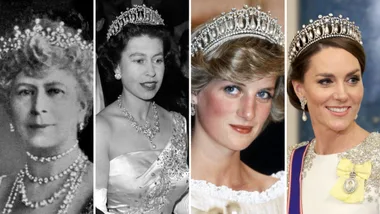Stepping into the voluminous Changi Airport, you forget you’re actually in an aviation hub, with a Sunflower garden, mammoth butterfly enclosure, so-called enchanted garden and a rooftop cactus display. And that’s before you step outside.
The tree-lined route along the East Coast Parkway is a truly beautiful introduction to this city state: sparkling clean, fast, and filled with tropical flora everywhere you look – Palms along the coast, cascading Bougainvilleas, and the ever-present Rain Tree – a soaring umbrella-shaped tree that fills itself with paintbrush like flowers of pink and white, that carefully wrap themselves up in a storm. It really is the Garden City.
Many Aussies budget their time in Singapore to a minimum, as it’s thought of a necessary, but vaguely annoying stopover on the way to Europe. My three days in Singapore taught me that I wouldn’t ever bypass such an incredible city-state again: Singapore is like an entrée to Asia, a cultural melting pot that shouldn’t be missed by anyone.
Food, glorious food
Singaporeans spend a good deal of their time eating, moving seamlessly from breakfast to lunch to dinner with little time in between. Be prepared for your belt to be a little tighter after your stay. The hawker markets are the traditional, local, way to eat, featuring hundreds of stalls in organised malls with everything on the menu from satay stingray to the Singaporean classic of Hainanese chicken rice.
At night, head to Satay by the Bay – its’ plastic chairs, concrete floors and constantly moving ceiling fans might not look fancy (it’s not!), but the food is bountiful and handily… this hawkers’ market is a short walk from Gardens by the Bay – more on that later.

Local Singaporean food
Another famous hawker market is to be found at Tiong Bahru|target=”_blank”), open from breakfast til late at night. When here, you must try the Chwee Kueh – rice cakes with preserved radish and chilli. They are greasy yet delicious, and served simply on a large waxy piece of brown paper. Watch locals’ chow them down easily with minute chopsticks, then wash down your own meal with one of the myriad fresh juices available. Head downstairs afterwards to experience the ‘wet market’, where you will find piles of fresh fish ready for sale; mountains of tropical fruit; and even paper offerings for the afterlife.
.jpg?resize=1024%2C577)
Singaporean market
Another breakfast option is Chow Mee Chin Confectionary, on East Coast Road. This little hole in the wall exudes old-school charm: tiled floor, basic seating (we shared with a family of three) and the most delicious looking custard tarts. While waiting for your kopi or teh, grab your own pastries from the displays, and then pay at the end. Run by a group of old ‘aunties’, the offerings are simple but tasty. We shared a plate of tarts, before our kaya toast arrived. This is Singapore’s favoured breakfast spread, a thick green paste that is essentially coconut jam. It’s super sweet and served with lashings of butter to make it even more decadent. Most locals eat it alongside a serve of very runny boiled eggs, which are liberally coated with soy sauce, salt and pepper.
For something a little more upmarket, try True Blue Cuisine. It’s a showcase of indigenous Singaporean food, who are known as Peranakans. The building is elegant art deco, cool and relaxing after walking the sunny, humid streets. Try a lunchtime banquet, which will give you a sample of traditional food, served in sweet blue and white china bowls, and washed down with copious amounts of ‘Teh Panir’, or hot tea. The speciality of the house is Ayam Buah Keluak, a stewed chicken dish served with a black oily nut, which tastes strongly like vegemite, and won’t be to everyone’s taste. More delicious was the delicate broth served with the crab and chicken meatball soup, followed by a sticky black rice pudding for dessert.
No visit to Singapore is complete without some chilli crab, and there are a plethora of restaurants that serve this national dish. We chose Long Beach Seafood because it has been serving crab for nearly seven decades, and importantly, it is one of the few places that will de-shell your crab for you (meaning no sticky fingers!). This Singaporean institution serves more than 500 meals a night, with dozens of cashed-up patrons shelling out for the $800 Alaskan King Crab, flown live from it’s native habitat. We settled on Sri Lankan crab – cheaper and just as nice for a novice crab connoisseur.
For the perfect nightcap, head to 1-Altitude, a skyscraper that boasts the highest alfresco bar in the world. It provides a breathtaking 360-degree view across Singapore, and watching the sunset from here is pretty special. The locale is stunning, the vibe chilled, and the drinks are served quickly to happy revellers lounging on outdoor sofas – gorging on the view of the sparkling city below. If heights aren’t your thing, head to Ann Siang Hill – packed with bars and nightclubs – the road is shut to cars so pedestrians can happily take over the streets, walking between watering holes and pocket restaurants.
.jpg?resize=1024%2C577)
Breakfast in Singpore

Singaporean skyline
Besides eating?
Gardens by the Bayare uniquely Singaporean, in that they are man-made (like much of the city), but focus heavily on creating a green lung for this city-state of 5.3 million. A nighttime stroll through these man-made gardens is something to behold. The soaring Supertrees, concrete and metal ‘trees’ that reach 16 storeys into the sky, are covered with hundreds and thousands of tropical plants, and come alive with a dazzling light show every evening. You can walk between the trees on a footbridge, or admire their unique beauty from the ground. The daytime brings a new brightness to the gardens; make sure you visit early(ish) in the morning – before it gets too sticky and hot.
The Peranakan Museum is set in a sherbet coloured early 20th century building on Armenian Street and is worth visiting, for a deeper understanding of the old Singapore. ‘Peranakan’ translates literally as ‘descendent’ and traditionally refers to Singaporeans who were half Chinese, half Malay – but the title can also refer to other cross-cultural mixes. The furniture and artefacts in this small museum are truly stunning: bright rainbow tapestries featuring parrots and flowers; dark wooden cabinetry decorated heavily for altar worship; delicate pink and yellow peonie-filled vases and jars for special occasions. To admire some rare Peranakan terraces, fairy floss coloured and all in a row, head to Joo Chiat. This cultural strip has a number of sweet boutiques and funky cafes.

Singapore’s metal trees

Local houses
Driving into Little India feels like a sensory overload, and actually feels like being in downtown Mumbai. Hundreds of colourful garlands drip from altars around this neighbourhood, and the population is clearly more Indian than anywhere else on the island. Fantastic saris abound, with many wearers dripping in gold jewels from their ears and noses. Tiny shops, jam packed with thousands of bangles (in one) or Bollywood movies (another) dominate this strip. Smaller outdoor malls are more touristy: you can buy sweet Nepalese toys, or have your hands tattooed with henna for just a few dollars.

Local stores
Haji Lane is worth wandering: it is packed with quirky shops (look out for textiles, rugs and undiscovered designers) and its’ entryway features impressive artwork that dominates an entire wall. It is part of the city’s Arab Quarter, which is dominated by Masjid Sultan – the largest and oldest mosque in Singapore, which was first built in 1863. This area was nominally ‘given’ to the city’s Muslim community, but is now both a tourist area and area for worship. Just pass the mosque you’ll find the Malay Heritage Centre – ask for a guided tour, and learn more about the royal past of this city.
Chinatown is a must for any Singaporean stopover – bustling, loud and vibrant – there is colour and noise everywhere you look. Check out the Singapore Tourism Board Heritage Trail walking tours for a free, in-depth look at the area. A guide walked us around the packed streets that were dripping with lanterns (3,168 lanterns to be precise, all hand made!) above our heads for the annual Lantern or Mooncake Festival. This annual parade celebrates family coming together, to eat mooncakes and admire the moon’s roundness and brightness during what was a traditional harvest month. You meander in and out of tight laneways, sipping tea at an ancient teashop one minute; and sampling the sweetest, stickiest pork jerky the next. Chinatown is a sensory overload: finish your walking tour with a cold drink and another bowl of noodles in the enclave’s food street. The people watching is at its very best here, tourists blend in with locals, who navigate their way past street performers and buskers.
Chinatown is one of the best places to be based in Singapore, as it is 10 minutes from almost everything. The Dorsett Hotel boasts a rooftop swimming pool, gymnasium, plush beds and free wi-fi for all their guests. It’s contemporary and eclectic – a massive chandelier dominates the foyer, but modern art is a feature of this hotel – think European tradition meets Asian elegance.
.jpg?resize=1024%2C577)
Chinatown
Singapore: a taste of Asia

Dragons on display
Singapore is green, colourful and entirely edible. There is food everywhere in this town, and your palette can travel from China to India to Malaysia and back again in less than a day. It’s easy to get around, too – there are efficient buses and trains that are both air-conditioned and on time. Because of the divergent cultures, there’s a festival happening somewhere on the island virtually every week – so check before you go. Make Singapore part of your next European trip, not only will your break up an uncomfortably long flight, but you’ll get a crash course in Asian diversity that will leave you hungry for more.
The writer was a guest of Singapore Tourism, and flew via Singapore Airlines. Flights are available from most Australian capital cities.











